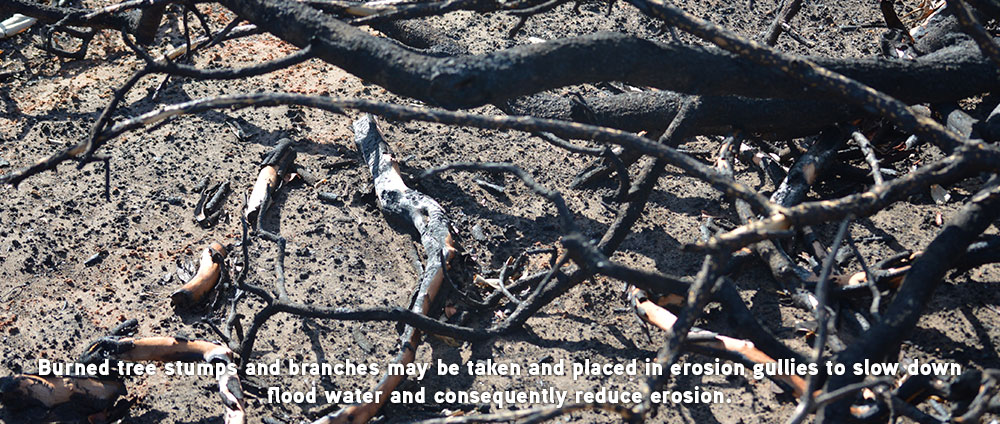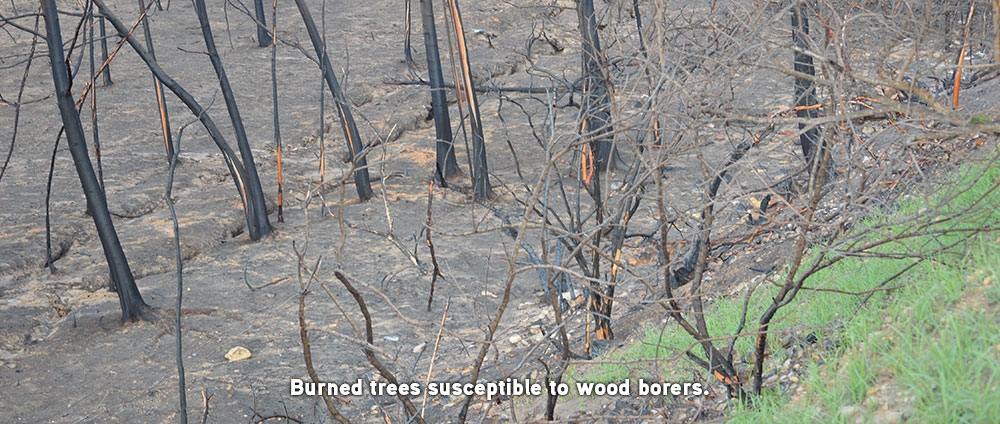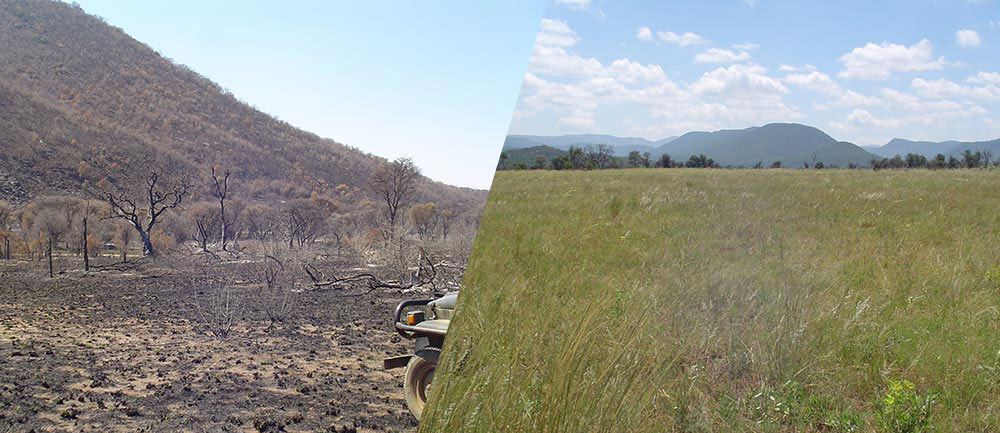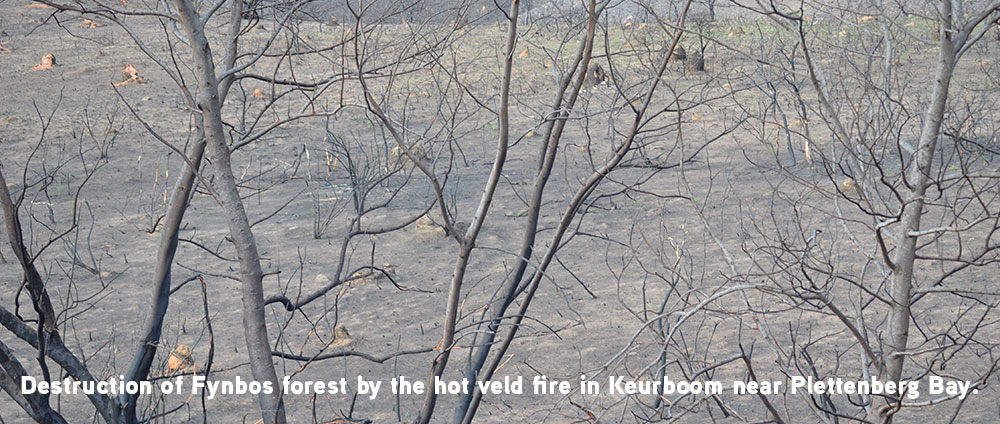Veld fires are a common phenomenon in the South African landscape. They occur naturally in grasslands, woodlands, Fynbos and sometimes in indigenous forests. Fire as a natural process can have a positive effect on vegetation structure and composition. It also helps recycle nutrients contained in old and dead plants. However, veld fires can get out of control causing widespread destruction to forests, grasslands, animals and people.
Run-away veld fires generally occur in hot and very dry conditions. In South Africa, there are two high-risk fire seasons which follow two rainfall patterns, the dry summer season of the Western Cape and the dry winter season in the rest of the country. The presence of fuel load, which is dry leaves, wood, dead trees and grass, and moderate to strong winds further intensify veld fires. This has been a feature of the northern provinces of South Africa in spring 2017, with vast tracts of unusually dense dry veld ravaged by wildfires.
On 29 August 2017, a fire broke out in Keurboom near Plettenberg Bay and continued well into September destroying 10 000 hectares. It was termed the largest fire outbreak ever in the Southern Cape. In addition, the Eastern Cape also had a fire outbreak which destroyed 5 315 hectares of land. Many nature reserves in those areas were severely damaged with loss of animals and most importantly the loss of grazing areas.
The first step in veld rehabilitation from a fire would be to identify areas most prone to erosion and to prioritise remedial action there. This would require sowing with an appropriate veld seed mixture to restore cover as soon as possible and build up the diminished soil seed bank.
Flat terrain and deep soils are easier to work due to their amenability to mechanical operations. On the other hand areas with steep sloping terrain and characteristically shallow stony soil often require soil to be cultivated by hand and seeded manually with veld seed. In both processes, it is important that a rough seedbed is established to allow the seed to be incorporated in the top two centimetres of soil and then rolled mechanically or trampled to ensure seed-soil contact.
Individual planting sites are often comparatively small and scattered over a rehabilitation area due to obstacles such as trees and rocks. The young grass is usually the most attractive grazing in the area. It is therefore essential to protect it from grazers so that the plants can mature fully, flower and produce seed in the first full growing season. This can be achieved by the method of brush packing. This method refers to covering seeded areas with cut thorn tree branches to a thickness of 500 mm to one metre. Alternatively, grazing animals need to be excluded from areas where seeding has been done by effective fencing.
In areas where brush packing may be impossible or seeded areas cannot be protected by fencing, seeding large areas relative to the game count all at the same time will contribute to the success of rehabilitation. This will reduce the risk of individual patches being grazed into the ground. This strategy may require a reduction in stocking levels in the area. It is very important to establish these grasses in the first rainfall season and allow a full growing season with as light utilisation as possible. This will allow more seed to be deposited into the soil and facilitate the plant succession process.


A well-devised rehabilitation plan was implemented to assist the veld to rehabilitate (read more in the article on the
There are many impacts on veld which call for rehabilitation. Fire is just one. However, the principles involved in successful rehabilitation are the same regardless of the cause of damage. Planting appropriate veld grass seed such as Biomosome™ veld seed mixtures and application of strategies and techniques that will result in the plants reaching maturity, flowering and producing further seed is the key. This lays the foundation for rapid plant succession to climax veld.
Biomosome™ reclamation veld seed mixtures are formulated with pioneer and sub-climax species according to their adaption to the various biomes of South Africa.
Rehabilitation of burned veld with Biomosome™ reclamation veld seed

Whether damaged by a veld fire or bovine overgrazing, the grazing supporting Southern Africa’s game farms and reserves can be assisted to return to its natural glory and intended carrying-capacity. On the left the scene of a runaway fire. On the right grazing at the same scene two years later after planting Biomosome™ reclamation veld seed from MayFord.

